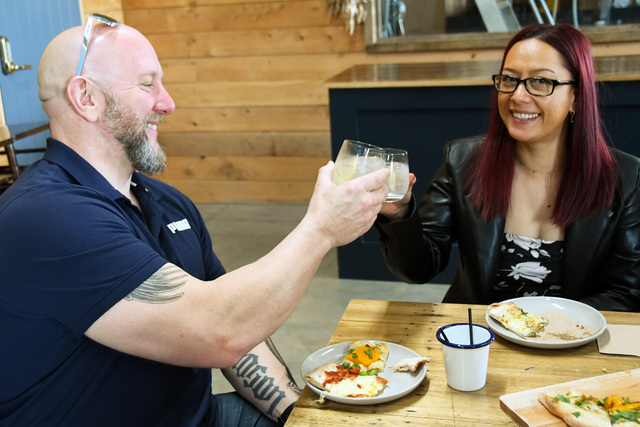According to a new report conducted by the Stroke Foundation, the number of Australians experiencing strokes over the past year is the highest it has been in over two decades.
Australia’s growing and ageing population along with changing diets and minimal exercise, the report projects that the number of Australians having strokes will continue to climb increasingly if immediate action is not taken.
Released on 25 September, the Stroke Foundation’s Economic Impact of Stroke Report also found that in 2023, 45,785 Australians experienced a stroke. This is the equivalent to one stroke every 11 minutes.
Stroke survivor and Launching Place local Peter Spence suffered a stroke seven years ago after having a serious infection.
Peter said, “I had a knee replacement done and then three or four months later I got an infection in that knee so they rushed me off to hospital and they operated on the knee and cleaned it out and that night in hospital I had a stroke.”
“I woke up through the night and couldn’t see anything. I could only see a little bit of my phone,” he said.
“When the nurses came in at around four o’clock, I just told them I couldn’t really and then it all got a bit hectic.”
Peter’s stroke impacted his eyesight, memory and muscle strength.
“The stroke mainly affected my eyesight but I also lost a lot of memories and my memory is still not good today. Bodywise, it affected the strength in my arms. I still don’t have as much strength as I once had. Apart from these things, I came out pretty good really,” Peter said,
Unable to remember what the stroke itself felt like due to being asleep when it occurred, Peter was told that he had suffered a stroke four hours after he awoke.
Despite his vision being heavily impacted straight after his stroke, Peter’s vision, memory and muscle strength began to improve with rehab.
Peter said, “When the stroke first happened, I could hardly see anything and then probably six weeks down the track it really improved to where I am now but my peripheral vision isn’t so good. I still can’t scan so I run into things.”
“I probably spent about six months in hospital and rehab so that was a fair haul but I recovered alright,” Peter said.
At first, straight after the stroke, I didn’t have a great attitude, I was pretty disappointed but you realise when you go to rehab and you see other people who have lost legs and stuff that you’re not that bad off after all.”
Due to his six month stint in rehab, Peter had to retire after his stroke episode.
Peter said, “It affected my life greatly. That’s when I finished work and went from doing 2000km per week to doing nothing.”
“We also have five acres of garden so when I got home, I couldn’t do a full day’s work. I could do half a day and that used to frustrate me because I am a person that, if I start something, I want to finish it that day and not the next day,” Peter said.
“That got me down a bit. Luckily I had a little staffordshire who was great company and she kept me going. She was my companion and she was there with me wherever I went.”
The Stroke Foundation’s Economic Impact of Stroke Report also found that the costs associated with stroke in 2023 were over $15.7 billion over a lifetime, over $350,000 per person.
This $15.7 billion was broken down into $5.5 billion in healthcare costs, $6.3 billion in costs related to lost productivity in the workplace and at home, and $3.3 billion in costs related to the provision of informal care.
The report’s modelling identifies when considering the first-year cost ($7.7 billion) and the identified stroke costs of the National Disability Insurance Scheme (NDIS) ($1.3 billion), the annual cost of stroke to the Australian economy is $9 billion.
With close to half a million survivors of stroke living in the Australian community, the costs to the nation’s economy are hefty.
The report also forecasts that by 2050, the number of strokes per year will soar to 72,000.
Stroke Foundation chief operations officer Dr Lisa Murphy said, “80 percent of strokes are preventable. The leading cause of stroke is high blood pressure which can be hereditary or caused by outside factors such as hormones or diet.”
“The thing about strokes is that, although they can happen at any age, they are more common in the elderly so with an ageing population, the number is going to go up,” she said.
“Over 65s is the most common age bracket but a quarter of all strokes happen under the age of 65 and it does happen to babies and children as well.”
According to Dr Lisa, the foreseen elevated numbers of people having strokes has a “massive effect on the medical system.”
Suggesting that stroke numbers will cost the Australian Government approximately $9 billion annually, the report states that $1.8 billion of these costs are direct healthcare costs.
Other costs consist of the loss of productivity wherein people who have had strokes can’t go back to work along with unpaid carer costs where partners have to stop work to care for the person who has had the stroke.
“The other factor in addition to growing and ageing populations is that our lifestyles are not conducive to preventing chronic diseases.”
“For example, less physical activity, our diets are worsening, access to fresh fruits and vegetables are getting harder and levels of obesity are increasing. It’s not only the ageing population but the way we are as a society at the moment is going to increase people’s risk of having a stroke,” she said.
When it comes to strokes, Dr Lisa believes in a “multifactorial approach.”
“I think looking at health outside of the typical health portfolio such as looking at things like infrastructure and policies around food and ensuring people have access to a well balanced diet and freshwater and simple things like that is really important,” Dr Lisa said.
“We need to make sure that it is easy for people to walk around and easy for people to cycle so addressing the increase in stroke numbers needs to embody a broad brush approach.
“It is definitely not on the individual. Society needs to support people so they can make these changes.”
The Economic Impact of Stroke Report has modelled three initiatives that the Stroke Foundation thinks can make a difference – prevention, faster access to acute treatment and accessibility to community rehabilitation.







